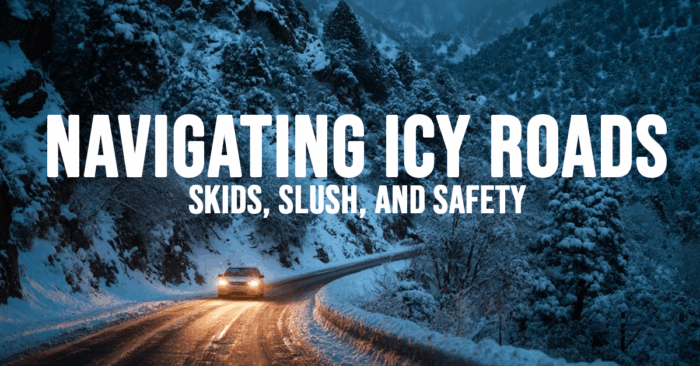The Driver’s Blueprint: Demystifying Auto Insurance Coverage

The Driver’s Blueprint: Demystifying Auto Insurance Coverage
For most drivers, auto insurance is a necessary, and often grudgingly paid, expense. We know we need it to be legal, but many of us don’t truly understand what we’re buying. Beyond the monthly premium, there’s a complex ecosystem of coverage types, deductibles, and endorsements that can be the difference between a minor inconvenience and a financial catastrophe after an accident. Understanding this ecosystem is the first step to becoming a more informed and protected driver.
The foundation of any auto policy is liability coverage. This is what you’re legally required to have in most states. It’s split into two parts: bodily injury liability and property damage liability. Bodily injury covers the costs of injuries to other people in an accident you cause, including medical bills and lost wages. Property damage covers the cost of repairing or replacing another person’s property, like their car or a fence. The limits on these coverages are often written as a series of numbers, for example, 25/50/25, which means $25,000 per person for bodily injury, $50,000 per accident for bodily injury, and $25,000 for property damage. While these may be the state minimums, they are often insufficient in a major accident, leaving you personally responsible for the excess.
Beyond liability, there’s a host of optional but highly recommended coverages. Collision coverage pays for damage to your own vehicle after an accident, regardless of who is at fault. This is especially important for new or valuable cars. Comprehensive coverage, on the other hand, covers damage to your car from non-collision events, such as theft, vandalism, fire, or a falling tree limb. These two coverages come with a deductible, the amount you pay out-of-pocket before your insurance kicks in. A higher deductible will lower your premium, but you need to be sure you can afford that amount if a claim arises.
Two other critical coverages are Uninsured/Underinsured Motorist (UM/UIM) and Personal Injury Protection (PIP) or Medical Payments (MedPay). UM/UIM protects you if you are hit by a driver who has no insurance or not enough insurance to cover your injuries or damages. This is a crucial safety net, as a surprising number of drivers operate without adequate coverage. PIP or MedPay pays for your own medical expenses and, in some states, lost wages, regardless of who is at fault. This can be a lifesaver, as it provides immediate financial relief for medical bills, without waiting for the liability determination of an accident.
Saving money on auto insurance is a constant goal for many. One of the most effective strategies is to shop around and compare quotes from multiple insurers. Premiums are influenced by a wide range of factors, including your driving record, age, vehicle type, and even your credit score in some states. Other ways to lower your premium include maintaining a good driving record, taking a defensive driving course, bundling your auto and home policies with the same insurer, and taking advantage of discounts for good students, low mileage, or safety features on your car. Ultimately, auto insurance is a shield against the financial fallout of the unexpected. By understanding what you’re buying, you can build a policy that provides robust protection without breaking the bank.
Do you have questions about your insurance? Find an insurance agent near you with our Agent Finder
Search All Blogs
Search All Blogs
Read More Blogs
Cozying Up: Embracing the Danish Art of Hygge for a Stress-Free December
Banish the December chaos! A simple guide to adopting Hygge—the Danish concept of cozy contentment—for a truly joyful holiday season.
Tinsel, Traffic, and Transactions: Insuring Your Business Against December’s Holiday Rush Risks
Don’t let the holiday rush expose your business. A guide to essential commercial insurance coverages for increased sales, foot traffic, and cyber threats in December.
The Ultimate December Gift: Why Life Insurance is the Most Important Present You’ll Ever Give
Forget the gadgets; life insurance is the real gift of security. A timely look at protecting your family’s future during the season of giving.
Skids, Slush, and Safety: How Your Auto Insurance Navigates the December Driving Nightmare
Essential auto insurance checks and tips for safe, claim-free driving through December’s challenging winter weather and holiday traffic.
Snowed In, Safely Covered: A December Guide to Home Insurance and Winter Preparedness
Don’t let winter woes ruin your holiday cheer. Essential tips on home insurance coverage for snow, ice, and festive accidents.
The Mindful Feast: Reclaiming Thanksgiving in a World of Distraction
Want a more peaceful Thanksgiving? Learn how to embrace a mindful approach and find true gratitude this year.
The New Entrepreneur’s Playbook: Insuring Your Business for Digital and Global Risks in 2026
Starting a digital-first business? Learn how to protect your enterprise from modern risks in 2026.
The Modern Parent’s Dilemma: Life Insurance for a Generation of Savers and Investors
Today’s parents have new financial goals. Here’s how life insurance can be a flexible tool for a modern family in 2026.
The Gig Economy Driver: Navigating Auto Insurance for Side Hustles in 2026
Driving for a gig app? Your personal auto insurance might not cover you. Learn how to get the right coverage in 2026.
The Modern Homeowner’s Guide to Water Damage: The Hidden Risk of 2026
Water damage is a growing threat to your home. Learn how to prevent it and protect your insurance in 2026.









